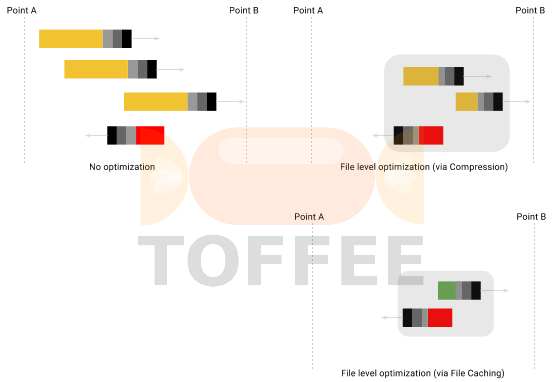HOME 》 The TOFFEE Project :: TOFFEE-Butterscotch :: Save and Optimize your Internet/WAN bandwidth
![]()
TOFFEE-Butterscotch is an open-source software which can be used to save and optimize your Internet/WAN bandwidth.
Unlike TOFFEE (and TOFFEE-DataCenter) TOFFEE-Butterscotch is a non peer-to-peer (and asymmetric) network optimization solution.
This makes TOFFEE-Butterscotch an ideal tool for all Home and SOHO users.
| 💎 TOFFEE-MOCHA new bootable ISO: | Download |
| 💎 TOFFEE Data-Center Big picture and Overview: | Download PDF |
TOFFEE-DataCenter packet packaging feature for WAN Optimization ↗
Saturday' 13-Mar-2021
How to check a website using CDN ? ↗
Saturday' 13-Mar-2021
TEST CASES :: TEST RESULTS :: TOFFEE-Mocha-1.0.14 Development version ↗
Saturday' 13-Mar-2021
Featured Educational Video:
Research :: Optimization of network data (WAN Optimization) at various levels:

Learn Linux Systems Software and Kernel Programming:

Hardware Compression and Decompression Accelerator Cards:
![TOFFEE Architecture with Compression and Decompression Accelerator Card [CDN] TOFFEE Architecture with Compression and Decompression Accelerator Card [CDN]](http://sareesaremypassion.org/cdn/the-toffee-project/i/DOCUMENTATION/33/TOFFEE%20compression%20hardware.png)
TOFFEE-DataCenter on a Dell Server - Intel Xeon E5645 CPU:






